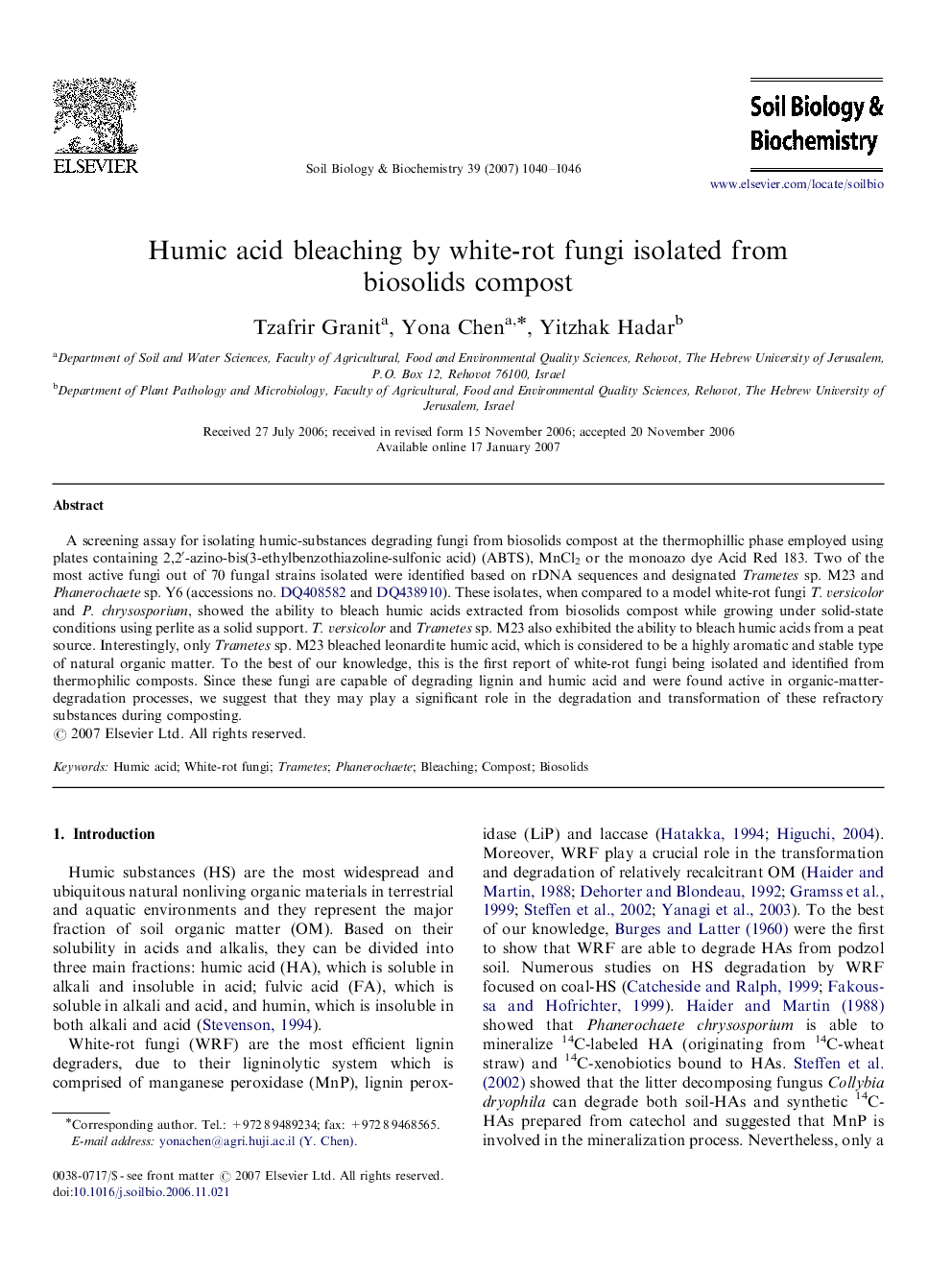| Article ID | Journal | Published Year | Pages | File Type |
|---|---|---|---|---|
| 2026411 | Soil Biology and Biochemistry | 2007 | 7 Pages |
A screening assay for isolating humic-substances degrading fungi from biosolids compost at the thermophillic phase employed using plates containing 2,2′-azino-bis(3-ethylbenzothiazoline-sulfonic acid) (ABTS), MnCl2 or the monoazo dye Acid Red 183. Two of the most active fungi out of 70 fungal strains isolated were identified based on rDNA sequences and designated Trametes sp. M23 and Phanerochaete sp. Y6 (accessions no. DQ408582 and DQ438910). These isolates, when compared to a model white-rot fungi T. versicolor and P. chrysosporium, showed the ability to bleach humic acids extracted from biosolids compost while growing under solid-state conditions using perlite as a solid support. T. versicolor and Trametes sp. M23 also exhibited the ability to bleach humic acids from a peat source. Interestingly, only Trametes sp. M23 bleached leonardite humic acid, which is considered to be a highly aromatic and stable type of natural organic matter. To the best of our knowledge, this is the first report of white-rot fungi being isolated and identified from thermophilic composts. Since these fungi are capable of degrading lignin and humic acid and were found active in organic-matter-degradation processes, we suggest that they may play a significant role in the degradation and transformation of these refractory substances during composting.
